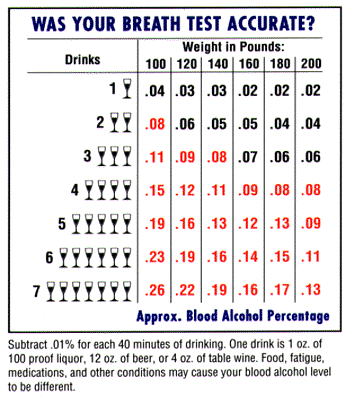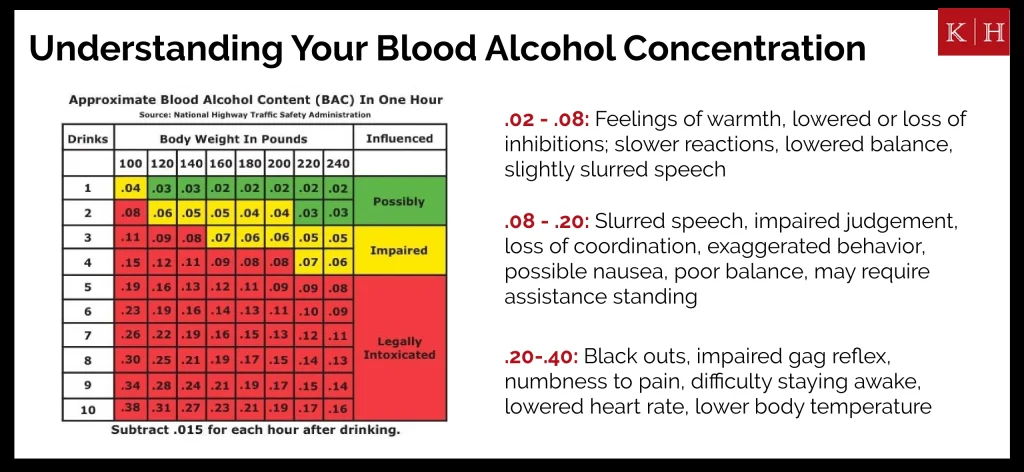What is The Legal Alcohol Limit? One Drink Over the Limit Could Cost You $10,000 Legal BAC
The legal alcohol limit in the United States is 0.08% blood alcohol concentration (BAC) for drivers 21 and older. Drivers under 21 face zero tolerance laws with limits of 0.00-0.02%, and commercial drivers must stay under 0.04%. Getting caught over these limits means automatic license suspension, fines up to $5,000, and possible jail time—even for first offenders.
Don’t let one bad decision destroy your record and your wallet.
What Is the Legal Alcohol Limit?
The legal alcohol limit is 0.08% BAC in 49 states, meaning you’re legally drunk if 8 grams of alcohol exist in every 100 milliliters of your blood. Utah is the only exception, where the limit drops to 0.05%.
BAC measures how much alcohol flows through your bloodstream after drinking. The higher your BAC, the more impaired you become—affecting your judgment, reaction time, and ability to control your vehicle safely.
All 50 states adopted the 0.08% standard after federal legislation in 2000 threatened to cut highway funding for non-compliant states. By 2004, every state had fallen in line.
BAC Limits by Driver Type
Standard Drivers (21 and Older)
Legal Limit: 0.08% BAC
At 0.08% BAC, you have reduced muscle coordination, impaired judgment, and difficulty detecting danger. Most states consider this the threshold where you’re too impaired to drive safely.
For the average 170-pound man, reaching 0.08% takes about four standard drinks in two hours. A 137-pound woman hits this limit after about three drinks in the same timeframe.

Underage Drivers (Under 21)
Legal Limit: 0.00-0.02% BAC
Zero tolerance laws make it criminal for drivers under 21 to operate vehicles with any measurable alcohol in their system. Most states set the limit between 0.00% and 0.02%—basically, any detectable amount gets you arrested.
These stricter rules exist because underage drinking is illegal regardless of whether you’re driving. If you’re not old enough to drink legally, you’re definitely not old enough to drink and drive.
Commercial Drivers
Legal Limit: 0.04% BAC
Commercial vehicle operators including truck drivers face a 0.04% BAC limit—half the standard driver limit. This stricter standard recognizes that large commercial vehicles pose greater dangers when operated by impaired drivers.
This limit applies whether you’re driving your commercial vehicle or your personal car. Once you hold a commercial license, the 0.04% threshold follows you everywhere.
How BAC Is Measured
Breathalyzer Tests
Police use portable breathalyzers during traffic stops to estimate your BAC by analyzing alcohol vapor in your breath. These roadside tests give officers probable cause for arrest if results show you’re over the limit.
After arrest, officers conduct more precise breath tests at the station using calibrated Intoxilyzer machines. These results hold up in court and determine your exact BAC level.
Blood Tests
Blood tests provide the most accurate BAC measurements but require either your consent or a warrant. The Supreme Court ruled that police generally need warrants before forcing blood draws from DUI suspects.
Hospitals draw blood if you’re injured in an accident or unconscious. These results can be used against you in criminal proceedings.
Field Sobriety Tests
Officers conduct physical tests—like walking a straight line or standing on one leg—to assess impairment before making arrests. These tests aren’t BAC measurements but help establish probable cause.
You can legally refuse field sobriety tests, though officers may use your refusal as additional evidence of impairment.
What Affects Your BAC
Body Weight: Heavier people have more blood volume, so alcohol dilutes more. A 200-pound man drinking four beers reaches a lower BAC than a 130-pound woman drinking the same amount.
Gender: Women typically reach higher BAC levels than men after drinking equal amounts due to differences in body composition and metabolism. Women have less water content in their bodies, causing alcohol to concentrate more.
Food Consumption: Eating before or while drinking slows alcohol absorption. Food in your stomach creates a barrier that delays alcohol from entering your bloodstream. Drinking on an empty stomach sends your BAC skyrocketing.
Drinking Speed: Slamming drinks overwhelms your liver’s ability to process alcohol. Your liver metabolizes roughly one standard drink per hour—drinking faster than this rate causes BAC to climb rapidly.
Metabolism: Individual metabolism rates vary based on genetics, age, and overall health. Some people process alcohol faster than others, affecting how quickly BAC rises and falls.
Drink Strength: A standard drink contains about 0.6 ounces of pure alcohol—one 12-ounce beer, one 5-ounce glass of wine, or one 1.5-ounce shot of liquor. Mixed drinks and craft beers often contain multiple standard drinks in a single serving.
Implied Consent Laws
When you get your driver’s license, you automatically consent to BAC testing if arrested for DUI. This “implied consent” means refusing a breathalyzer or blood test triggers automatic penalties—separate from any DUI conviction.
Consequences of Refusing Testing
Every state except Wyoming suspends your license for refusing a breath test after DUI arrest. First-time refusals typically result in 6-12 month license suspensions. Repeat refusals can trigger suspensions up to three years plus criminal penalties.
Your refusal can be used as evidence against you in court. Prosecutors argue that refusing testing shows “consciousness of guilt”—you knew you were drunk and tried to hide it.
Some states have adopted “no-refusal” enforcement programs where judges issue warrants on-site, allowing police to force blood draws from drivers who refuse testing.

Penalties for Exceeding Legal Limits
First Offense DUI
First-time DUI offenders typically face fines between $500 and $1,000, though total costs including court fees and insurance increases can reach $10,000 or more.
Jail Time: Most states require minimum jail sentences of 24-48 hours for first offenses, with maximums ranging from six months to one year. Some jurisdictions allow community service instead of jail.
License Suspension: License suspensions for first-time DUIs range from six months to one year. Many states offer restricted licenses allowing you to drive to work, school, and medical appointments during suspension.
DUI School: Courts mandate alcohol education programs lasting 3-12 months depending on your BAC level and state requirements. You’ll pay for these classes out of pocket—typically $500-$2,000.
Probation: First offenders usually receive 12 months probation with conditions including no alcohol consumption, random drug testing, and community service.
Ignition Interlock Devices: Many states require installation of breathalyzer-equipped ignition systems that prevent your car from starting if alcohol is detected. You’ll pay $200+ monthly for device rental and monitoring.
Enhanced Penalties for High BAC
Most states impose enhanced penalties when BAC reaches 0.15% or higher—nearly double the legal limit. These “aggravated DUI” charges carry harsher consequences:
- Longer jail sentences (often mandatory minimums of 48-96 hours)
- Higher fines ($1,000-$5,000)
- Extended license suspensions (1-2 years)
- Mandatory ignition interlock for 1-2 years
In Louisiana, drivers with BAC over 0.20% face mandatory 48-hour jail sentences and two-year license suspensions.
Repeat Offender Penalties
Second and third DUI convictions trigger felony charges in many states, with fines reaching $5,000+ and jail sentences ranging from several months to multiple years.
Third-time DUI offenders in Louisiana face 1-5 years in prison, while fourth offenses carry 10-30 year prison sentences. Multiple DUIs often result in permanent license revocation.
State-Specific Variations
Utah’s Lower Limit
Utah reduced its legal limit to 0.05% BAC in 2018, becoming the only state with a limit below 0.08%. The change has significantly reduced fatal crashes in Utah.
California’s Strict Enforcement
California charges DUI causing injury as a “wobbler” offense that prosecutors can file as either misdemeanor or felony. DUI causing death can result in second-degree murder charges with 15-years-to-life sentences.
Enhanced Penalty Thresholds
Different states trigger enhanced penalties at different BAC levels:
- Most states: 0.15% BAC
- Tennessee: 0.20% BAC
- South Dakota: 0.17% BAC
- Utah: 0.16% BAC
Recent Legal Developments
The National Transportation Safety Board recommended in 2013 that all states lower the legal limit from 0.08% to 0.05%, citing evidence from other countries where lower limits reduced alcohol-related crashes by 40%.
Progress in reducing drunk driving fatalities has stalled over the past 15 years despite enforcement efforts. The NHTSA estimates drunk drivers kill someone every 39 minutes in the United States—more than 13,000 preventable deaths annually.
Several states are considering following Utah’s lead by lowering their legal limits to 0.05% or implementing harsher penalties for drunk driving offenses.
Real-Life DUI Case Example
In Louisiana, defendants with BAC over 0.15% face mandatory 48-hour jail terms that cannot be suspended, plus fines up to $1,000 and installation of ignition interlock devices for 12 months. If a child was in the vehicle, certain jail sentences become mandatory regardless of BAC level.
In Camden, New Jersey, a driver’s refusal charge was dismissed after their attorney proved the officer failed to properly explain the implied consent law and penalties for refusal. This case shows how procedural mistakes can invalidate DUI evidence.
How to Stay Under the Legal Limit
Count Your Drinks: Track every alcoholic beverage you consume. Remember that craft beers and mixed drinks often contain multiple standard drinks in one serving.
Use the One-Hour Rule: Your body metabolizes roughly one standard drink per hour. Space drinks accordingly and stop drinking at least one hour before driving for every drink consumed.
Eat Before Drinking: Food slows alcohol absorption. Never drink on an empty stomach if you plan to drive later.
Use a BAC Calculator: Smartphone apps and online calculators estimate your BAC based on drinks consumed, body weight, gender, and time elapsed. These tools provide rough estimates but shouldn’t replace good judgment.
Arrange Alternative Transportation: Plan ahead with designated drivers, rideshares, taxis, or public transit. The cost of an Uber is nothing compared to a $10,000+ DUI conviction.
Wait It Out: If you’ve been drinking, wait several hours before driving. Sleeping doesn’t accelerate alcohol metabolism—only time sobers you up.
Frequently Asked Questions
Can I get a DUI if I’m under 0.08% BAC?
Yes. Most states have “impaired driving” laws that allow DUI charges at any BAC level if you show signs of impairment. Officers can arrest you based on failed field sobriety tests and observed behavior even with BAC below 0.08%.
How many drinks put me over the legal limit?
For an average 170-pound man, four standard drinks in two hours typically reach 0.08% BAC. A 137-pound woman hits this limit after three drinks. Individual metabolism, food consumption, and drinking speed affect actual BAC levels.
What happens if I refuse a breathalyzer test?
Your license gets suspended automatically—typically 6-12 months for first refusal. Some states impose fines from $300-$2,000 and require ignition interlock installation. Your refusal can be used as evidence against you in court.
Do DUI penalties apply to marijuana and drugs?
Yes. DUI laws prohibit driving while impaired by any substance—alcohol, marijuana, prescription medications, or illegal drugs. Police use field sobriety tests, drug recognition evaluations, and blood tests to establish drug impairment.
Can I get a DUI on a bicycle or scooter?
Most states only apply DUI laws to motor vehicles, but some include bicycles and electric scooters in their drunk driving statutes. Check your state’s specific laws—you could face DUI charges on a bike in some jurisdictions.
Will my car insurance rates increase after a DUI?
Absolutely. DUI auto insurance rates increase dramatically, starting around $112 per month for high-risk policies. Many insurers drop DUI offenders entirely, forcing you into expensive high-risk pools.
How long does a DUI stay on my record?
DUI convictions remain on your driving record for 10 years in most states. The criminal conviction stays on your record permanently unless expunged. Many states don’t allow DUI expungement.
Related Resources
For more information about DUI charges and legal defense, see:
Official Resources
Always verify current requirements with these official sources:
- National Highway Traffic Safety Administration (NHTSA) Impaired Driving
- Your state’s Department of Motor Vehicles (DMV) website
- Your state’s DUI statutes and vehicle code
Disclaimer: This information is for educational purposes only and does not constitute legal advice. DUI laws vary by state and change frequently. If you’re facing DUI charges, consult with a qualified DUI defense attorney in your jurisdiction immediately. Laws and penalties discussed here are subject to change, and individual circumstances affect case outcomes.
About the Author

Sarah Klein, JD, is a former criminal defense attorney with hands-on experience in cases involving DUIs, petty theft, assault, and false accusations. Through All About Lawyer, she now helps readers understand their legal rights, the criminal justice process, and how to protect themselves when facing charges.
Read more about Sarah
